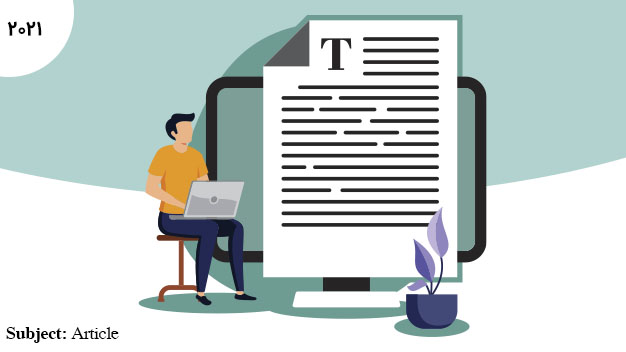پویا کتاب یکی از معتبرترین فروشگاههای تخصصی علوم ورزشی است که توانسته با فعالیت بیش از 10 ساله خود اعتماد عموم جامعه علمی-ورزشی کشور را به خود جلب کند.

مقاله مروری «بازسازی و توانبخشی رباط صلیبی قدامی (ACL)» با عنوان اصلی Anterior Cruciate Ligament Reconstruction Recovery and Rehabilitatio میباشد.
بازسازی و توانبخشی رباط صلیبی قدامی (ACL)
مقدمه: بازسازی موفق رباط صلیبی قدامی (ACL)، تحت تاثیر یک برنامهی توانبخشی موثر است. در حالی که مقالات مروری و جامع پیشین، مطالعات منتشر شده تا سال 2012 را مورد بررسی قرار دادهاند.
روششناسی: در مطالعه مروری پیشرو، در مجموع 824 مقالهی منتشر شده در سالهای 2012 تا 2020 بررسی شده که از این تعداد 50 مقاله با توجه به معیارهای ورود، مورد ارزیابی قرار گرفته است.
نتایج: توانبخشی سریع میتواند برای بیمارانی که گرفت تاندونهای گراسیلیس و سمی تندینوس را دریافت کردهاند، موثر باشد. تمرین محدودیت جریان خون (BFR) و فعالیتهای ورزشی با شدت بالا برای ریکاوری بازسازی ACL موثر نمیباشد. بریس بعد از عمل هیچ مزیتی ندارد. کریوتراپی قبل و بعد از عمل به عنوان یک مسکن میتواند موثر باشد. تمرینات زنجیره حرکتی باز میتواند باعث بهبود در بازسازی ACL شود. تمرینات پلایومتریک با شدت بالا موثر نیست. از نتایج تستهای عملکردی و قدرت چرخش خارجی هیپ میتوان در پیش بینی میزان آسیب مجدد استفاده کرد. تحریکهای عصبی عضلانی را میتوان به همراه تمرینات توانبخشی استفاده کرد. قبل از بازگشت به ورزش، آمادگی روانی افراد باید مورد ارزیابی قرار بگیرد.
نتیجهگیری: هرچند روشهای مختلف توانبخشی پس از بازسازی ACL در بهبود نتايج جراحی و سرعت بازگشت به ورزش موثراند، اما برای تأیید روش های مختلف به شواهد بیشتری نیاز است.
Anterior Cruciate Ligament Reconstruction Recovery and Rehabilitation
A Systematic Review
Background: The success of anterior cruciate ligament (ACL) reconstruction is influenced by effective rehabilitation. Previously published, comprehensive systematic reviews evaluating rehabilitation after ACL reconstruction have studied Level-I and II evidence published through 2012. Interval studies continue to evaluate the efficacy of various rehabilitative modalities.
Methods: A total of 824 articles from 2012 to 2020 were identified using multiple search engines. Fifty Level-I or II studies met inclusion criteria and were evaluated using the Consolidated Standards of Reporting Trials (CONSORT) criteria and National Institutes of Health (NIH) Study Quality Assessment Tools.
Results: Accelerated rehabilitation can be effective for patients with semitendinosus-gracilis grafts. Blood flow restriction (BFR) training with high-intensity exercise is not effective for ACL reconstruction recovery. Postoperative bracing does not offer any advantages or improve limb asymmetry. Cryotherapy is an effective analgesic when used perioperatively. The early introduction of open kinetic chain exercises may improve ACL reconstruction outcomes, and high-intensity plyometric exercise is not effective. Estimated pre-injury capacity (EPIC) levels may be more accurate than the Limb Symmetry Index (LSI) when using functional test results to predict reinjury rates, and hip external rotation strength may be the most accurate predictor of the hop test performance. Nerve blocks can provide postoperative analgesia with minimal complication risk. Neuromuscular electrical stimulation is effective when used independently and in combination with rehabilitative exercises. Psychological readiness should be evaluated both objectively and subjectively before allowing patients to safely return to sport. Electromyography biofeedback may help to regain muscular function, and whole-body vibration therapy can improve postural control. Supervised rehabilitation is more effective than unsupervised rehabilitation.
Conclusions: Various rehabilitative modalities following ACL reconstruction are effective in improving surgical outcomes and return-to-sport rates. Further evidence and improved study design are needed to further validate modalities including accelerated rehabilitation, BFR training, functional testing, and return-to-sport criteria.






